If you have ever travelled along the road from Paleochora to Kissamos, you will undoubtedly have paused, after driving through the tunnel beyond Katsomatados, to enjoy the dramatic view into the Topolia Gorge. And on the far side, just 500m across the gorge, you’ll see a ruined church, with another (white) chapel nearby. It’s well worth a visit, take my word for it, but how to get there is another matter ….
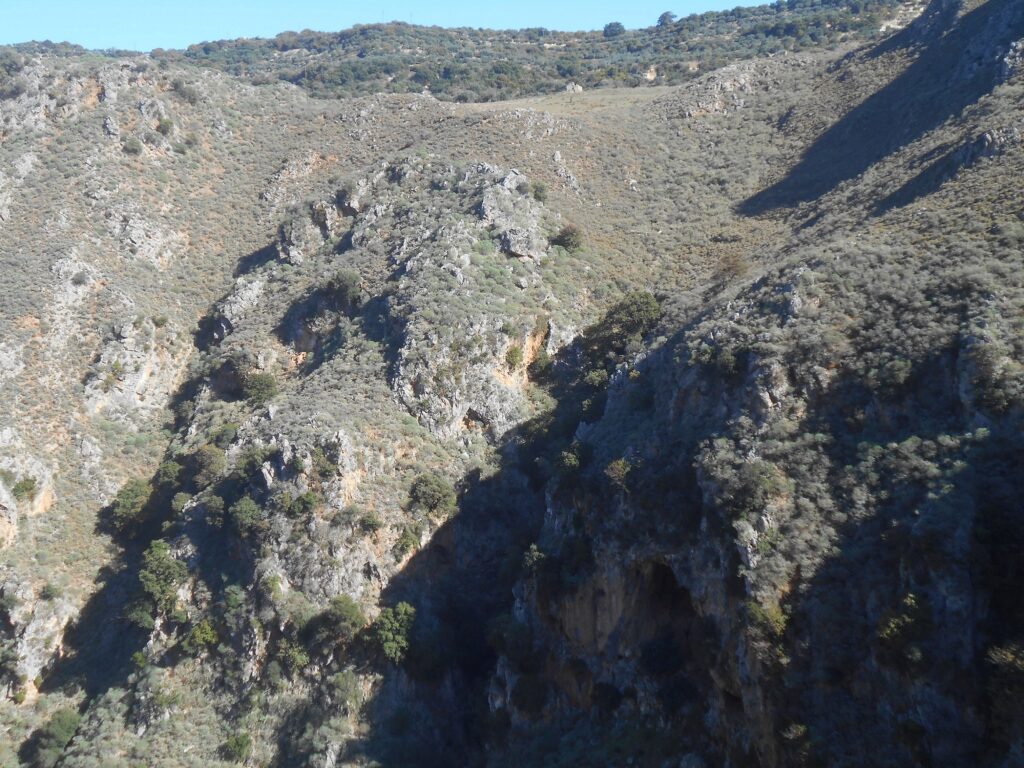
There’s no access from Topolia, or from Kapsaniana in the valley below, as Lynne and I discovered more than a decade ago. You’ll need to drive on down the valley to Voulgaro, turning right there (easily missed, 500m beyond the Aegean garage), and follow the winding road climbing for 4km to Mouri. You could begin this Explore walk from the village ‘platea’, but it’s better to continue out of the village for a further 0.5 km, turning sharp right at a sign marked ‘NISI’, and on uphill for a further 1.5 km to a junction indicating two obscure churches, and park there.
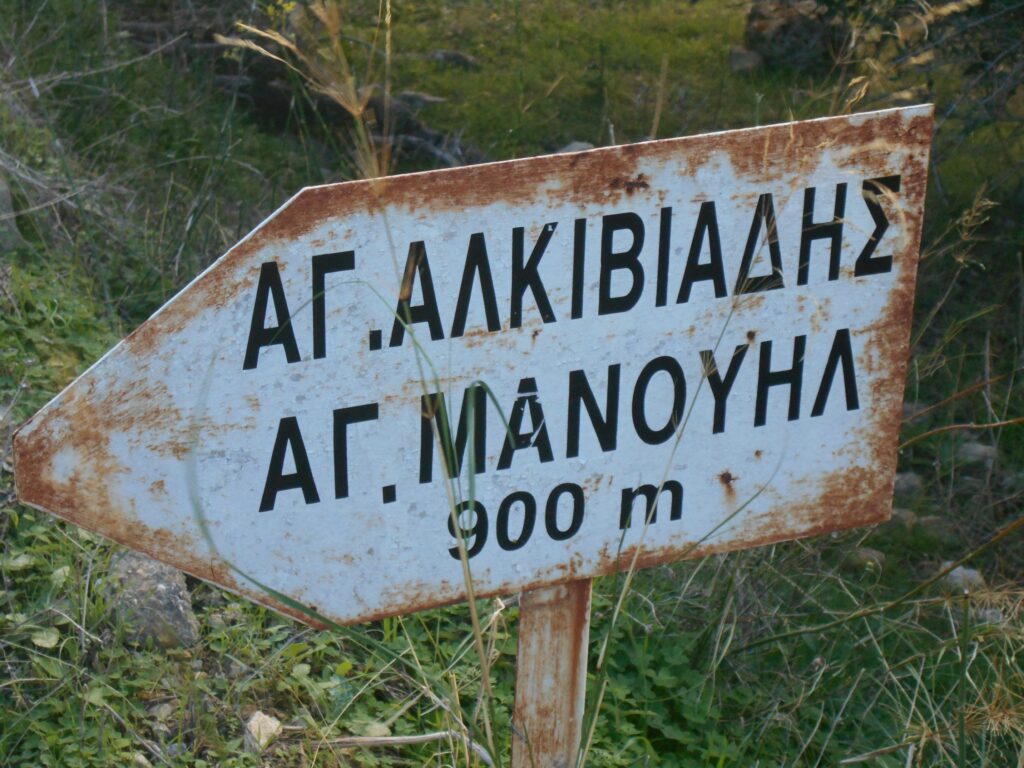
From here there’s a relatively flat walk of 1 km to the few houses of Nisi, and from there a further 500m to the church. Along the way are stunning views, ahead to the Topolia Gorge, and behind to Kissamos Bay and the peninsulae of Rodopou and Gramvousa. On the hillside across the deep valley of the River Tiflos lies Topolia, and far beyond is the ravine of the Sirikari Gorge.
The surfaced road ends at Nisi (Greek for ‘island’, but why here ?) Continue ahead, through a gate, and pass an abandoned circular construction, which after investigation turns out to be a charcoal kiln. There’s a similar one, still operational, on the road up from Voulgaro to Mouri.
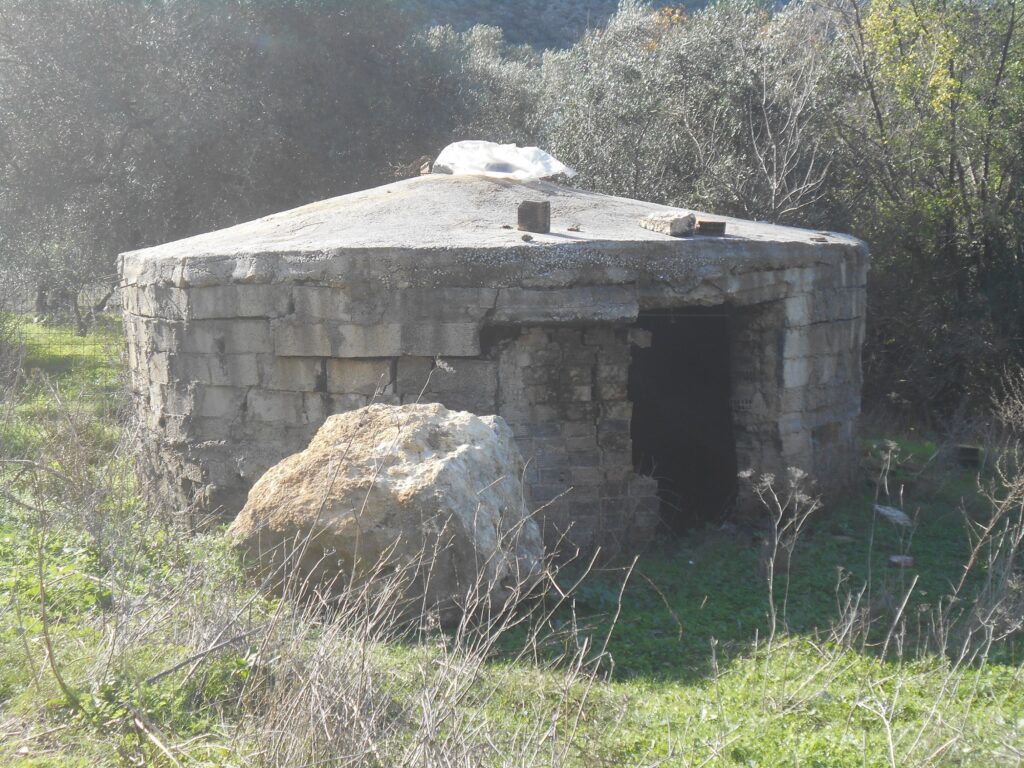
Charcoal was used for animal husbandry, horticulture, medicine, and probably more so here as cooking fuel.
Follow the grassy track, but leave the church until later and walk up to reach a “hidden gem,” the ruins of the Monastery of Agia Eirini, possibly dating back to the Byzantine period, 13th century. I’ve tried – and failed – to discover more, though it’s possibly connected to the relatively nearby monastery of Agia Varvara (St. Barbara) at Latziana, in the valley below. The latter is a short, and well-merited diversion on the return drive to Voulgaro.
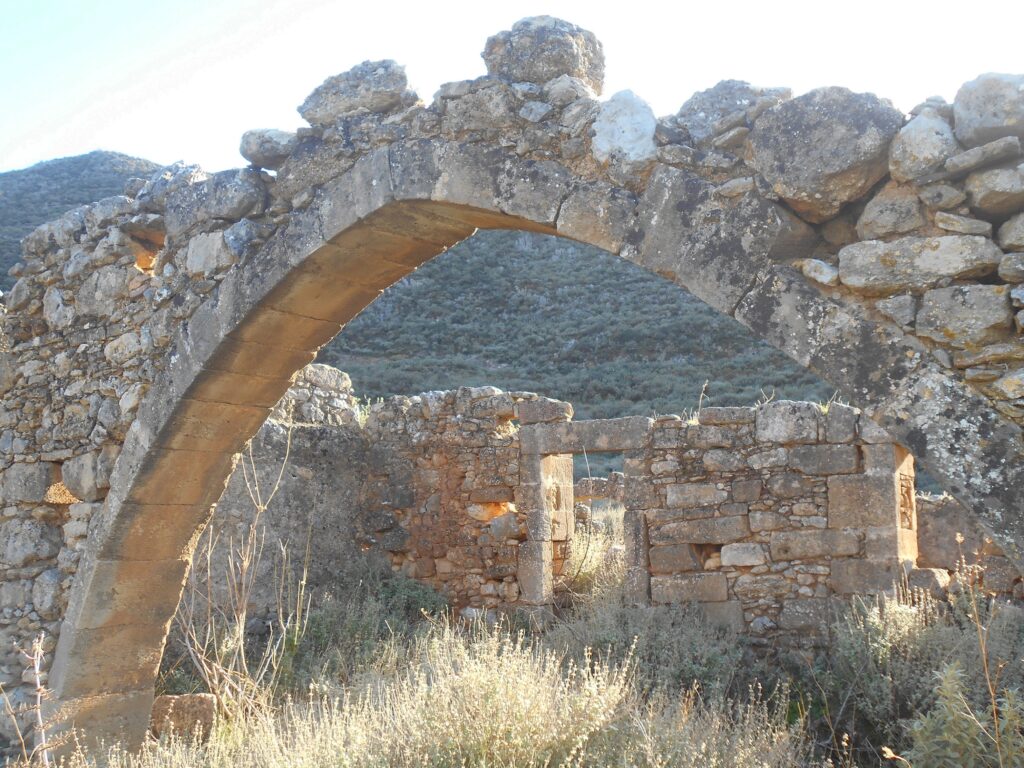
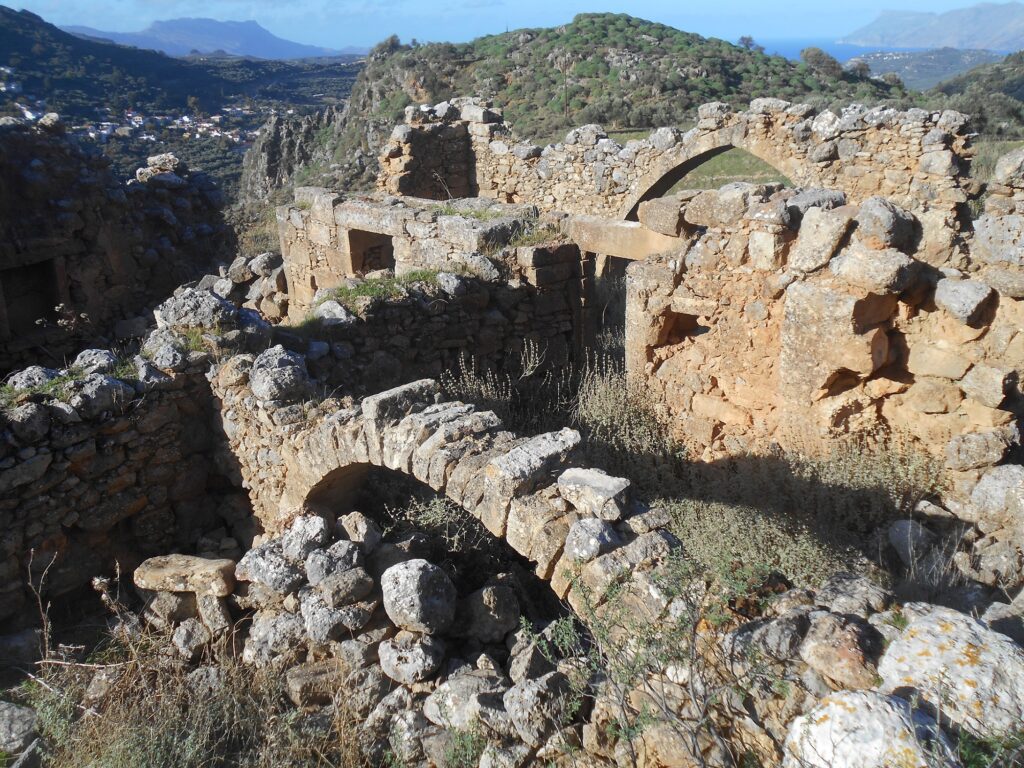
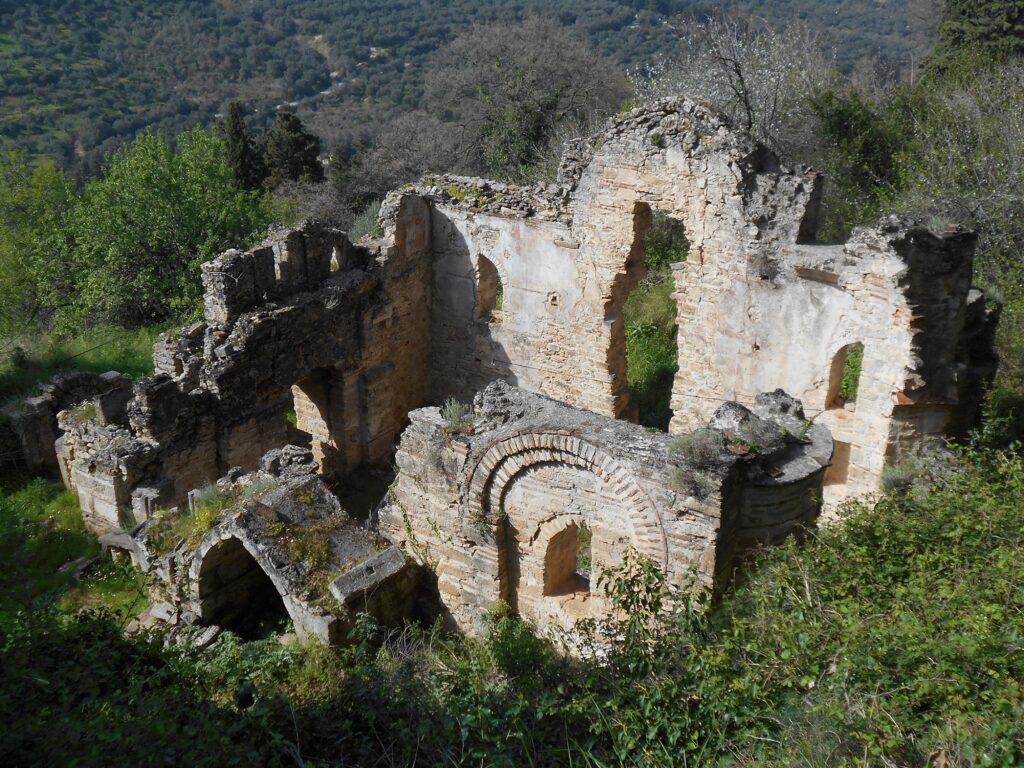
The monastery ruins are impressive, the remaining arches particularly so, and deserve to be better known. Take care while exploring over the surrounding rocky ground, then walk over, through a wire gate, to the church. Sadly this too is derelict and long abandoned to the elements, with a tree growing in its interior. If you can scramble inside, there are some fading frescoes, including one presumably of Agia Eirini.
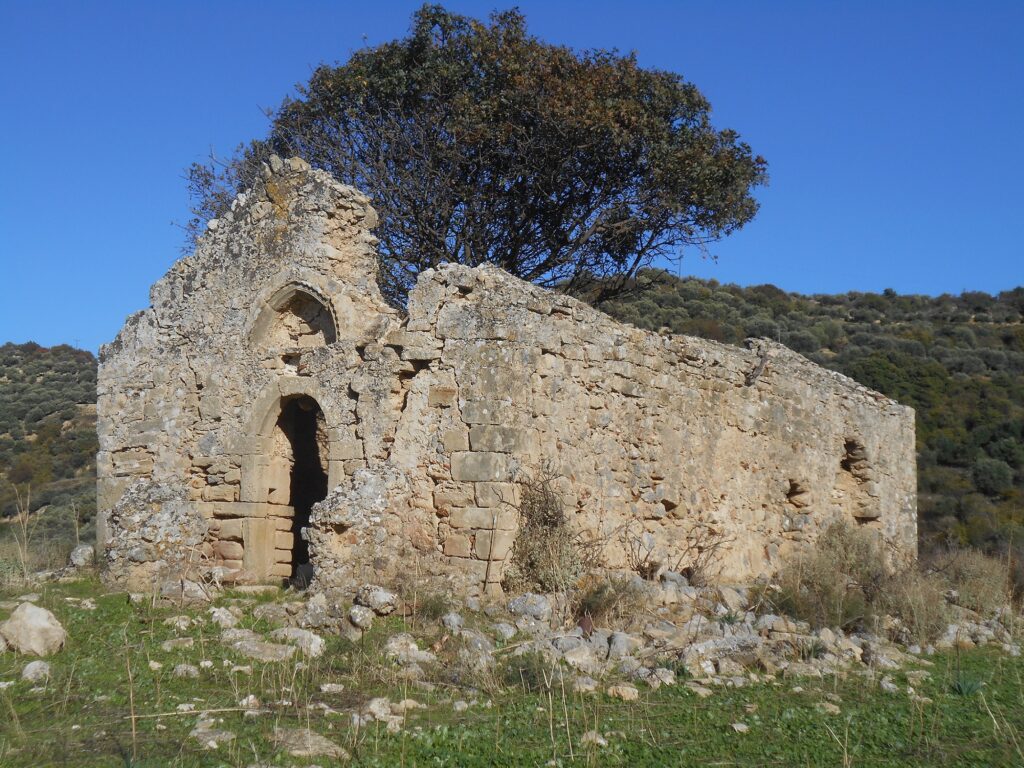
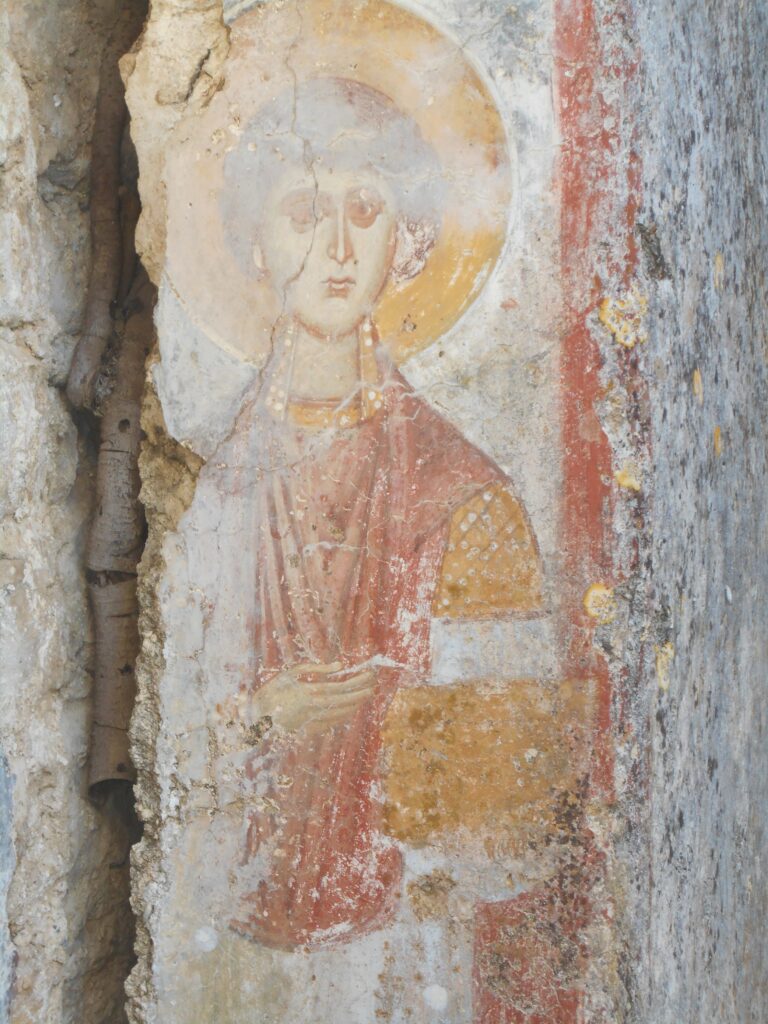
A short walk above is the simple chapel of Profitis Ilias, which offers little except its location, some 200m above Topolia Gorge, and with an expansive view over a wide area of NW Crete.
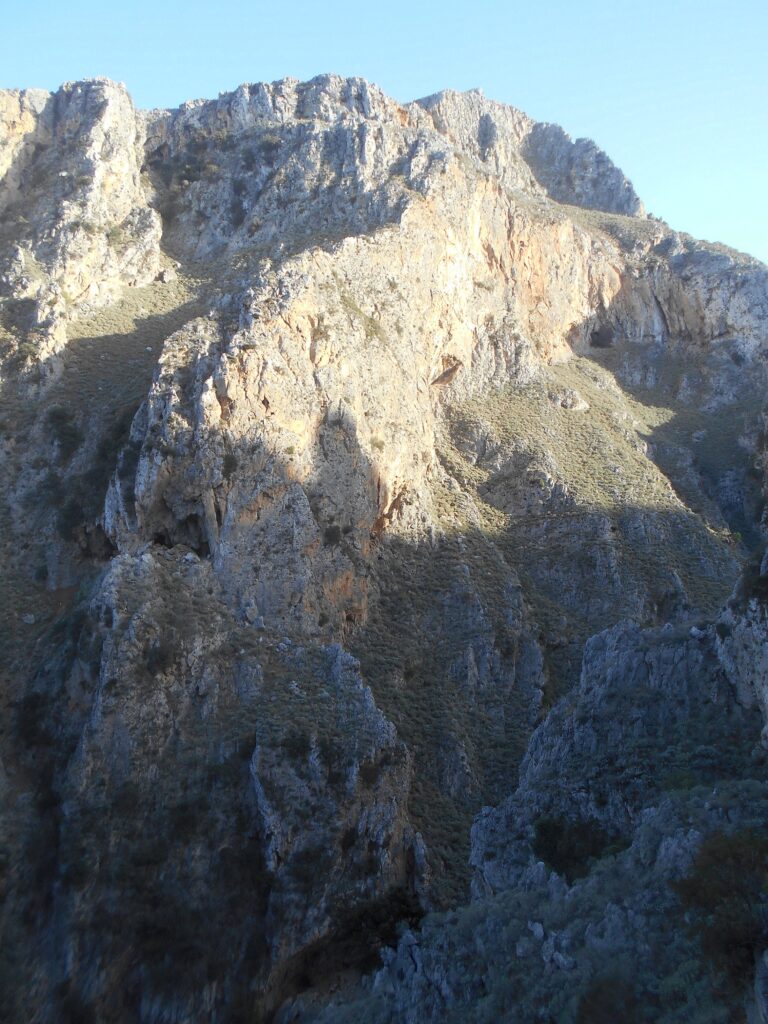
Choose a place for a picnic, or for quiet reflection and contemplation, trying to imagine the scene here long ago, before the easy walk back through Nisi. And on the return to Paleochora, pause before the Topolia tunnel to enjoy the view across the gorge, without doubt one of the most outstanding in Western Crete.


1 comments
Kalimera, the landscape around the gorge is very wild and impressive, the Topolia gorge itself is not particularly exciting. It always goes straight ahead in the stony or on a narrow path next to the riverbed, parallel to the road. In April, the gorge was very green and there was still water. It takes 1 hour to get through.
After three heavy rainstorms in February and April 2019 (worst winter in Crete in 60 years), much was destroyed in the Topolia Gorge by the rain masses, there were landslides. In September 2019, the gorge was partially closed off. The gorge is now accessible again. However, there is a very large boulder on the path (difficult at this point for small children) and there are a few piles of rubble.
I did the 17 km round hike Katsomtados – Mouri Gorge – Mourii – Church Agios Nikolaos – Agios Antonios Church – Latsiana – Agia Varvara Church – Kapsianiana – Topolia Gorge – Katsomatados. With small breaks 5.30 hours on the way.
The village of Katsomatados is a good starting point for the circular walk. The village is actually just a collection of tavernas, but there is also accommodation.
We decided to take the “counter-clockwise” route. In this direction there is only an ascent at the beginning, later it is mostly downhill.
From the village of Katsomatados you go straight on along a gravel road. After 15 minutes, turn left at a red VW bus. From here on the gravel road goes slowly uphill.
After 30 minutes, the gravel road turns left and right (the village of Sasalos is on the right), but you continue straight on through a small wooden gate on a narrower path.
The narrow path goes slightly downhill (beautiful view of a valley and the village of Sasalos here) until you reach a vineyard. Turn left at the vineyard (wooden sign).
After 20 minutes you will see the church of Agios Athanasios.
To the right of the church, a gully/drained ditch leads into the Mouri Gorge. A fence runs through the entire narrow Mouri gorge. Try to get to the right side and walk in the stream bed. The left side is very overgrown.
After 25 minutes the gorge widens and you go downhill between boulders.
After 10 minutes you come to a dirt track. Here you continue on the dirt road to the left through olive groves in 15 minutes to the village of Mouri. The Kafenion in Mouri was unfortunately closed. In Mouri there are a few houses for rent.
At a fork in the road, turn left. The road continues uphill on a gravel road towards the north – to the church of Agios Antonios. You will pass the parish hall and the larger church of Agios Georgios.
After a few minutes, the 13th century church of Agios Nikolaos is on the right. The exterior has been heavily altered, but the interior has beautiful frescoes.
After a few minutes the gravel road curves around, from here it is a 200 metre detour to the church of Agios Antonios. Beautiful view of the north coast/Kissamos Bay. Below the church is the village of Makronas, with its waterfall. To the northeast is the small village of Armenochori.
At the church, the road curves downhill on the gravel road. After 10 minutes you will reach the small village of Latsiana.
Just past Latsiana, we pass the ruined church of Agia Varvara/Naós Agías Varvára, dating from the fifteenth century, and a water spring.
The trail continues along a narrow path through an olive grove. Passing a chicken coop and a raki distillery, you arrive after 25 minutes in the sleepy charcoal-burner village of Kapsianiana.
Continue on the road until you reach a bridge, then turn right. This is already the Topolia Gorge.
Then continue on a narrow path slightly uphill through the olives. After 20 minutes there is a turn-off (ascent) to the village of Topolia. Here it is a little confusing.
Continue straight on and after 20 minutes you will reach the Topolia gorge. It takes 1 hour to walk through the Topolia Gorge to the car park in Katsomatados.
If you still feel like it, you can visit the cave Agia Sofia “The Wisdom of God”/Spílaio Agías Sofías tou Theoú in Katsomatados.
In the village of Katsomatados I can recommend the Tavern O Archontas (there are also 6 simple rooms).
Kalo Mina, kv